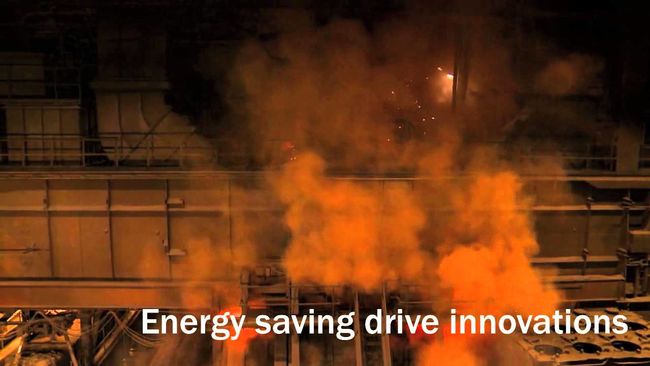Steel making is a continuous process. The melt shop is a hazardous environment of extreme heat, choking dust, hot metal and naked flame. Melt shop cranes must be able to lift and carry buckets of liquid metal safely.
Making molten steel
The ingredients for steel come from two main sources: raw materials and scrap. Because they are different substances, they are treated separately. Iron ore and coking coal are combined in a direct reduction process to produce solid metallic iron. A ladle crane lifts the melted iron for mixing with scrap to create molten steel.
The scrap coming from the scrapyard is loaded in the furnace with an overhead charging crane. The main hoisting machinery lifts the bucket to the furnace for melting. An auxiliary hoist on the crane opens and closes the bucket during loading. Depending on the facilities, a basic oxygen furnace or an electric arc furnace could be used. In a full-size mill, the scrap is added to iron, but in a minimill, the scrap might be the only raw source of liquid metal.
Casting into shape
From the initial furnace blast in the steel creation process, a teeming crane helps to mix the molten metal in the right proportions. Once the mix is right, liquid steel is then cast into shape. Tundish cranes are typically utilized in tundish maintenance and handling.
Multi-function cranes
The charging crane, ladle crane, teeming crane, and tundish crane are all quite similar and can be defined by their location and function in the plant. They are usually overhead traveling cranes that are fitted with special attachments to lift the giant ladles that contain liquid metal. They often perform more than one function and are used as backup for each other. Auxiliary hoists can be attached for scrap charging and maintenance functions, such as cleaning the empty ladles or lifting the furnace shell.
Up for the challenge
Every Konecranes hot metal crane is designed specifically for the unique challenges of this environment. Increased working coefficients, a differential gear reducer, redundancy in all critical systems, a backup brake on the rope drum, and motion limiters are just some of the technologies we employ. Automation of repetitive movements and an air-conditioned, ergonomic cabin keep the driver comfortable and able to concentrate on the task at hand.
Keep your crane healthy
To help the cranes last, exposed areas are protected against heat and dust. Our cranes can be fitted with remote monitoring so you can follow the operating statistics of the crane throughout its lifecycle. Routine maintenance helps to prevent unexpected faults, minimize downtime and maximize the productivity of the crane.


